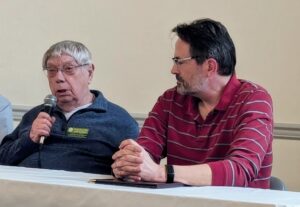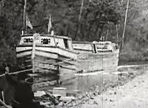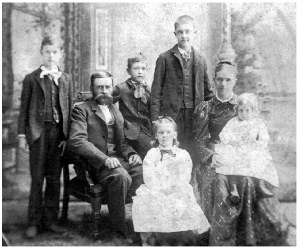
Canal History
Information about the historic C&O Canal and the people who made it work.

Information about the historic C&O Canal and the people who made it work.
John Frye told stories about his connection with Justice William O. Douglas at the C&O Association’s annual Douglas Hike banquet April 27, 2024.

In 1954 Justice Douglas mobilized public support for preserving the C&O Canal by hiking the full length with editors of the Washington Post and others. Those memories are captured in a video posted on YouTube.
In the following years Justice Douglas participated in reunion hikes. Those early reunion hikes were invitation-only events, unlike today’s hikes. In 1958 a teenaged John Frye was lucky enough to receive an invitation to join this elite group as they hiked upstream from Williamsport. John recalled how those early reunion hikes attracted political figures.
For more than two decades, our Along the Towpath newsletter featured historian Karen Gray’s Accompanied by the Past series. These articles that are a valuable resource for understanding the C&O Canal.
 :
:Contemporary accounts from Cumberland and other regional newspapers concerning the C&O Canal.
Paul Kreingold’s article chronicles his search for the quarry that supplied marble for the columns in the Old House Chamber of the U.S. Capitol. He located the quarry along the C&O Canal near White’s Ferry.
 Video:
Video:Library of Congress offers Down the Old Potomac, a 12-minute film made in 1917. The movie follows a week-long, 180-mile trip on the canal through the Potomac Valley from Cumberland to Georgetown. The film Includes scenes of the locks in operation, Paw Paw tunnel, coal barges plying the canal, Harpers Ferry, and Great Falls. Also available on ![]() .
.
 Lists of boats registered to operate on the canal and logs of the boat traffic as it passed Lock 75. Reading these documents you can get a sense of the cargo flow on the canal and the intensity of operations. If you are researching your family history, you may be able to find an ancestor.
Lists of boats registered to operate on the canal and logs of the boat traffic as it passed Lock 75. Reading these documents you can get a sense of the cargo flow on the canal and the intensity of operations. If you are researching your family history, you may be able to find an ancestor.
This document, written in December 1879, provides a cost analysis of different alternatives for operating canal boats. The author experimented with lashing two canal boats together, using only one crew and one team of four mules to operate the pair. He also analyzes the option of using a steam-powered canal boat to tow a second non-powered boat.

Payroll records have been transcribed using documents from the National Archives and the Lilly Lievsay Collection. This list of the men and women who worked on the C&O Canal can yield insights into the nature of the canal.
Chesapeake and Ohio Canal Company archives are part of the Special Collections at the University of Maryland Libraries. This collection consists of portions of the records of several lawsuits filed against the Chesapeake and Ohio Canal Company between 1880 and 1939; many of the legal issues raised were not entirely resolved until the early 1940s. The documents in this collection date from 1880 to 1945 with the bulk of the material dating from 1920 to 1943.
1973 flyer for a hike opposing the expansion of the Potomac Electric Power Company power plant at Dickerson.
Cumberland Chronicle from May 1972 describing the history of the western terminus of the canal.
Centennial Observer published in Williamsport in May 1962, with articles about local history.
![]() These compilations of canal boat mortgages give an insight into the operations of the canal during its heyday.
These compilations of canal boat mortgages give an insight into the operations of the canal during its heyday.

This compilation pulls information from mortgage documents to give the reader an idea of how much a mule cost.
 Family Histories:
Family Histories:Stories of the families that lived along the C&O Canal and made it work. William Bauman drew upon personal recollections and public records to prepare these documents
 :
:We have books about the canal available for download.
The Geology and Engineering Structures of the Chesapeake & Ohio Canal, written by William E. Davies.
Charles Ellet Jr. On the Chesapeake and Ohio Canal, Summer 1828–March 1830, Editors and Authors: Karen M. Gray, Ph.D.; Jeffry Richter, B.A., B.S.; Donald Sayenga
The Story of The Potomac Refining Company, written by Andrew Clemens.
We are lucky enough to have audio recordings from people who worked and lived along the C&O Canal.
Historical resources on social media
Proposed Map of Chesapeake and Ohio Canal, including portions never built. The line follows Wills Creek north from Cumberland to Hyndman PA, continues north up Little Wills Creek north and west. It crosses the Eastern Divide, follows Buffalo Creek (just south of Berlin PA) to Garret PA on the Casselman River. It then follows the Casselman river to the Youghiogheny River at Confluence, PA, then to Connellsville PA. (Courtesy of National Park Service.)